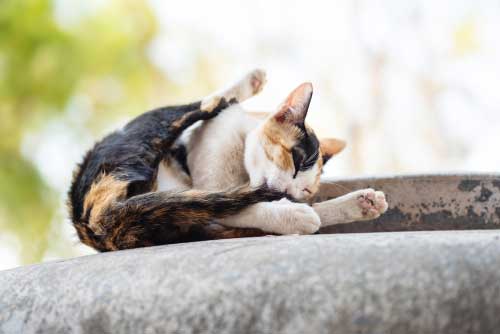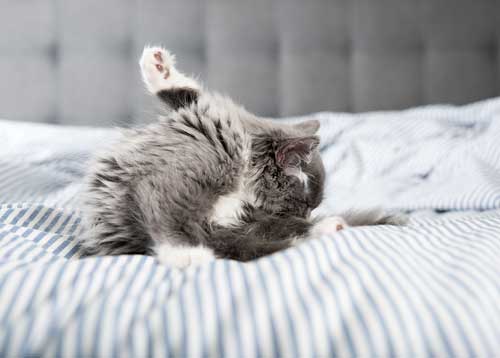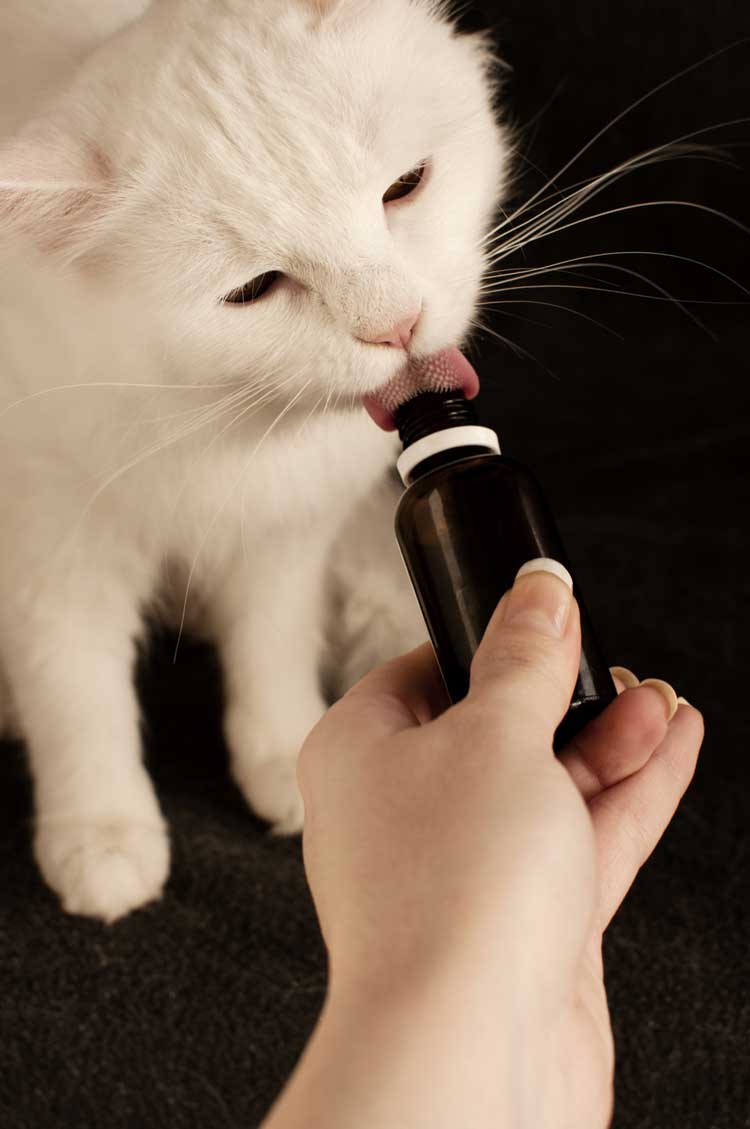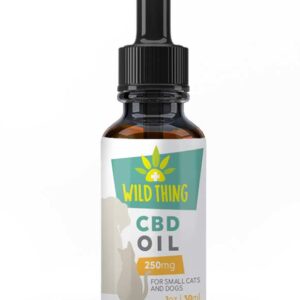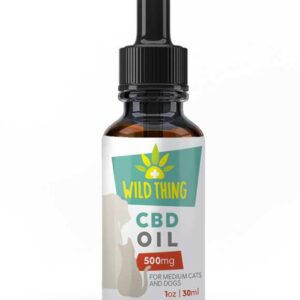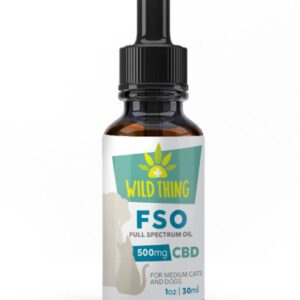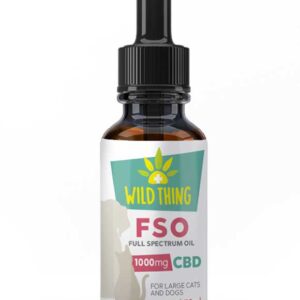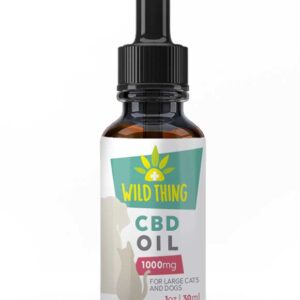A cat’s tail is like a woman’s hair – they fret about it, you’d best not try to pull it, and it’s state of well-being can be an indicator of their mood (dry, dishevelled and frizzy… run!).
Many “cat people” know that their cat’s tail is like a window to their feline’s soul. If their tail is waving, fluffy and shiny fur, then kitty is happy and alert. On the other hand, your cat’s tail whips around almost, and their fur is greasy then your cat might be suffering an illness – mental or physical. A rising condition in cats today that highlights this feature is known as “Tail Twitch, or Feline Hyperesthesia.
Also referred to as “Rolling Skin” syndrome, this affliction is a skin sensitivity. The nerve issue that causes cats to bite, lick or scratch their tails. Some cat owners have found this behavior quite hilarious. It can be a debilitating disorder that interrupts your cat’s daily life.
Ailment Guides:
Dermatitis In Dogs
Cancer In Cats
Irritable Bowel Syndrome In Dogs
“Tail Twitch” & nerve disorders in cats
What is hyperesthesia?
Feline Hyperesthesia is a very new, misunderstood disorder. Not a lot of information is available for what causes hyperesthesia in cats, but this condition has many associated symptoms with other ailments that might lend clues to its source. Fleas, dermatitis and allergies can have similar causes to tail twitch – stress, anxiety, poor diet, infection or parasites. It is important to eliminate these other conditions before proceeding with a potential diagnosis of hyperesthesia.
Some of the most known causes of feline hyperesthesia are:
Infection – whether your cat was in a fight and received a cut on its tail, has suffered from fleas or dermatitis, any skin injury or irritation can escalate into a nerve-related disorder like tail twitch.
Skin problems that relates with dehydration or nutrient deficiencies may be due to hyperesthesia. An important note on this cause-effect relationship with skin problems: feline hyperesthesia is a persistent disorder, almost like a nervous twitch. If you ever find that your cat is fussing over their tail then it may be due to rolling skin syndrome.
Malnutrition – as with most skin & coat conditions, hyperesthesia is affected by your cat’s diet. If your pet is showing signs like shabby coat and irritated skin, then, it may be due to deficiency of vital nutrients. These vital nutrients may include protein deficiency or omega-fatty acids.
Seizures – epilepsy and seizure disorders can be linked with the “rippling” of your cat’s skin. These small, often “shudder like” spasms on the tail share some similarities with seizures in cats. Although, hypersesthesia is not life-threatening like epilepsy, it can disrupt your cat’s day-to-day comfort. Also, it includes loss of appetite, severe anxiety and insomnia.
Symptoms of tail twitch:
Hyperesthesia has been compared to OCD (obsessive compulsive disorder), and the similarities have lead some studies to look into this association further. Neurological/behavioral disorders like obsessive grooming, phobias and hyperactivity can be linked to conditions like OCD and Hyperesthesia. The important distinction between these two is that “tail twitch” is characterized by your cat “chasing, fighting or almost trying to escape from” their tail. This unique and mysterious disorder is very iconic – once you’ve experienced it, you can discern it from other ailments right away.
Some other tell-tail signs of this stressful condition are:
- Rippling, twitching skin & fur from the tail up to the shoulders
- Manic behavior, such as wildly sprinting from room to room, or wide-eyed confusion (signs of fear)
- Patches of fur missing on tail and spine
- Inability to sleep due to constant twitching
- Loss of appetite
- Vomiting, loosened bowels due to stress
Best Supplements for Cat Hyperesthesia
If your feline suffers from similar symptoms, and you suspect your cat has a condition like hyperesthesia that is not understood, then what can you do for your furry loved one?
Although the prognosis is not very promising, there are numerous natural remedies and healing practices that some holistic veterinarians have applied to this unique disorder. Treatments like acupuncture, soothing skin ointments and focused, one-on-one time with your cat can work towards lessening the effects of this condition. There are some medications that are being used for dermatitis or eczema that have been used for cats with rolling skin syndrome, but that it up to your vet.
Minimizing stress is the most potent remedy you can offer as a responsible cat owner. This is why CBD is one of the best supplements for your cat’s hyperesthesia. Consistency, calmness and control of your cat’s environment are some of the best ways to improve your cat’s quality of life, which will also work towards reducing their anxiety and stress-related symptoms of hyperesthesia.
Learn More:
Cbd For Heatstroke Treatment In Dogs
Dog Flu Vaccine And Its Side Effects
How Long Does Cbd Stay In A Pets System
Why CBD can be an effective treatment for your feline nerve disorders
CBD – or Cannabidiol – can be an effective remedy for your cat’s anxiety and help to relieve symptoms of skin disorders.
Feline Hyperesthesia & CBD – or Cannabidiol – can be an effective remedy
CBD is one of the best supplements for cat hyperesthesia because it can be very helpful in calming your cats. CBD promotes relaxed behaviors and supports their overall health, with no side effects of lethargy or mind-altering effects. Many pet owners have found success using feline Hyperesthesia CBD or essential oils for feline Hyperesthesia. There are many feline Hyperesthesia natural treatments, but the main takeaway is to rely on treatments that help your cat with their anxieties.
CBD is generally effective and it has been widely used for calming hyperactive pets, including conditions like hyperesthesia. Think of CBD as a supplement that can reduce anxiety, stress and nervousness. You can take it, under the tongue, or applied topically to the affected areas. One of the most beneficial components of CBD is that it does not irritate the skin or cause any hallucinogenic effects. When introduced topically, CBD can soothe irritation, inflammation and reduce pain associated with skin conditions.
As one of the best supplements for cat hyperesthesia, CBD has the capacity to ease your pet’s nerves, help them relax and sleep. Cannabidiol does not just block the pain however, it can also reduce swelling and inflammation in the body. CBD can be ingested, applied topically or added to food/water.
CBD is a phytocannabinoid that has been shown to have a prominent effect on numerous ailments. CBD does this by interacting with your cat’s endocannabinoid system. Almost all animals, like people, have an endocannabinoid system; this network of neurotransmitters is integral to physiological processes like memory, mood, pain, stress and appetite.
CBD can help your cat by producing anti-inflammatory, anti-anxiety, antipsychotic, antispasmodic and analgesic effects indirectly. This is because, CBD interacts with your cat’s ECS (Endocannabinoid System) opposite to THC which directly binds to the Cannabinoid Receptors of the body. This does two things: makes the positive remedial properties more bioavailable to your pet; and lessens or negates the psychoactive effects, such as those associated with THC ingestion.
There are many things in which CBD is helpful. Therefore, one must include CBD into their cat’s routine. This will help your cat to maintain health and reduce stress.
Ailment Guides:
Aggression In Dogs
Appetite Loss In Cats
Abdominal Pain In Dogs
FAQ’s
How can I help my cat with Hyperesthesia?
Anxiety is a major component of Hyperesthesia, so minimizing stress and helping your cat to manage their nervous behaviors can go a long way towards reducing the effects of their Hyperesthesia. Routines like consistent food, cuddles, playtime and more can support cats in their battle with Hyperesthesia. Using essential oils for feline Hyperesthesia or treating feline Hyperesthesia with CBD are popular methods for promoting calm & relaxed behavior in your cats.
Does feline Hyperesthesia go away?
Hyperesthesia in cats can go away or subside over time, but it can also return throughout your cat’s lifetime. Generally speaking, this condition is not very debilitating to their health – more of an annoyance or “nervous tick”. If symptoms persist, you can certainly turn to feline Hyperesthesia natural treatments such as essential oils for feline Hyperesthesia or feline Hyperesthesia CBD oils & treats.
Is Hyperesthesia in cats painful?
Pain can occur in cats suffering from Hyperesthesia as it is marked by over-stimulation of senses in their skin, fur and muscles. Itchiness, spasms, twitching and irritation are also common symptoms of this condition. Try CBD for feline Hyperesthesia symptoms of pain.
How common is feline Hyperesthesia?
Hyperesthesia typically affects cats in their younger years – ages 1-5 – but it has been known to crop back up in older felines as well, albeit much more rarely.
How do you treat Hyperesthesia?
Hyperesthesia is mostly considered to be a behavioral condition, so most treatments involve settings routines, helping your cat to manage stress and providing comfort whenever “tail twitch” strikes. Other feline Hyperesthesia natural treatments include:
- CBD oil for feline Hyperesthesia
- Essential oils for feline Hyperesthesia
- Feline Hyperesthesia CBD treats or topicals

